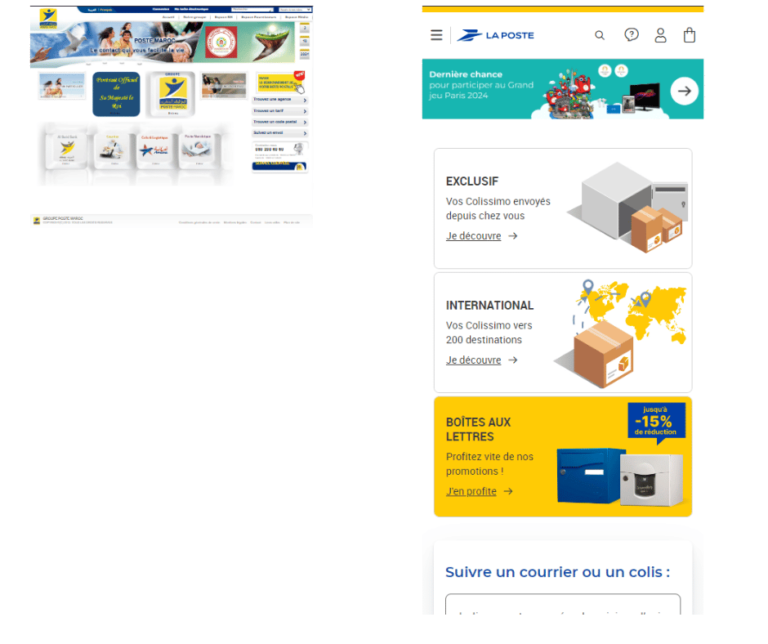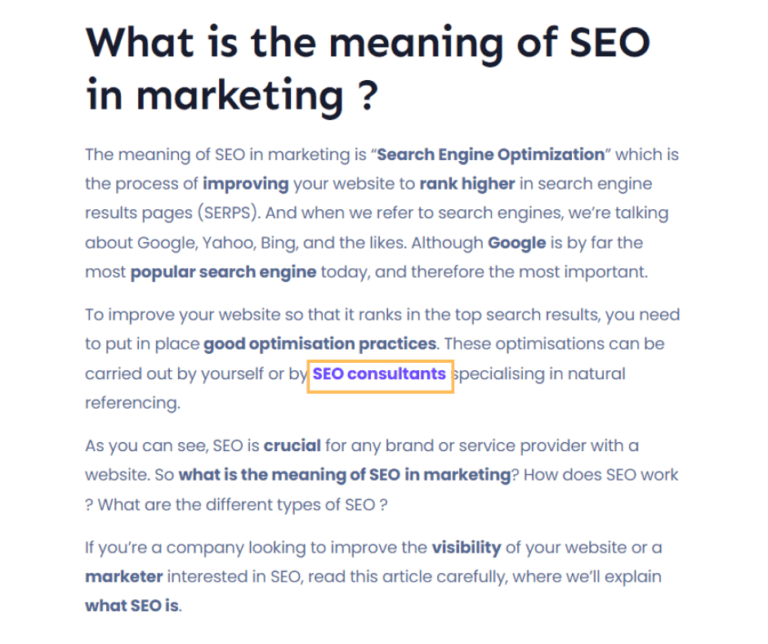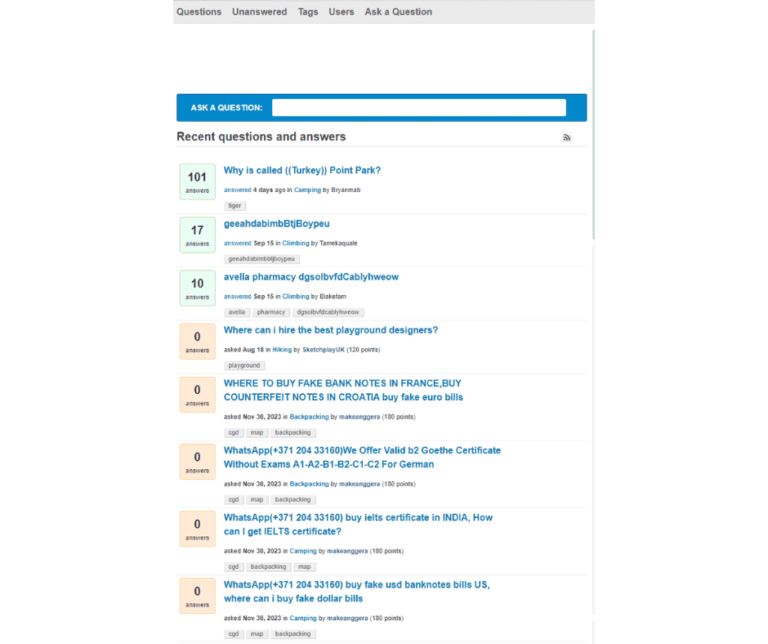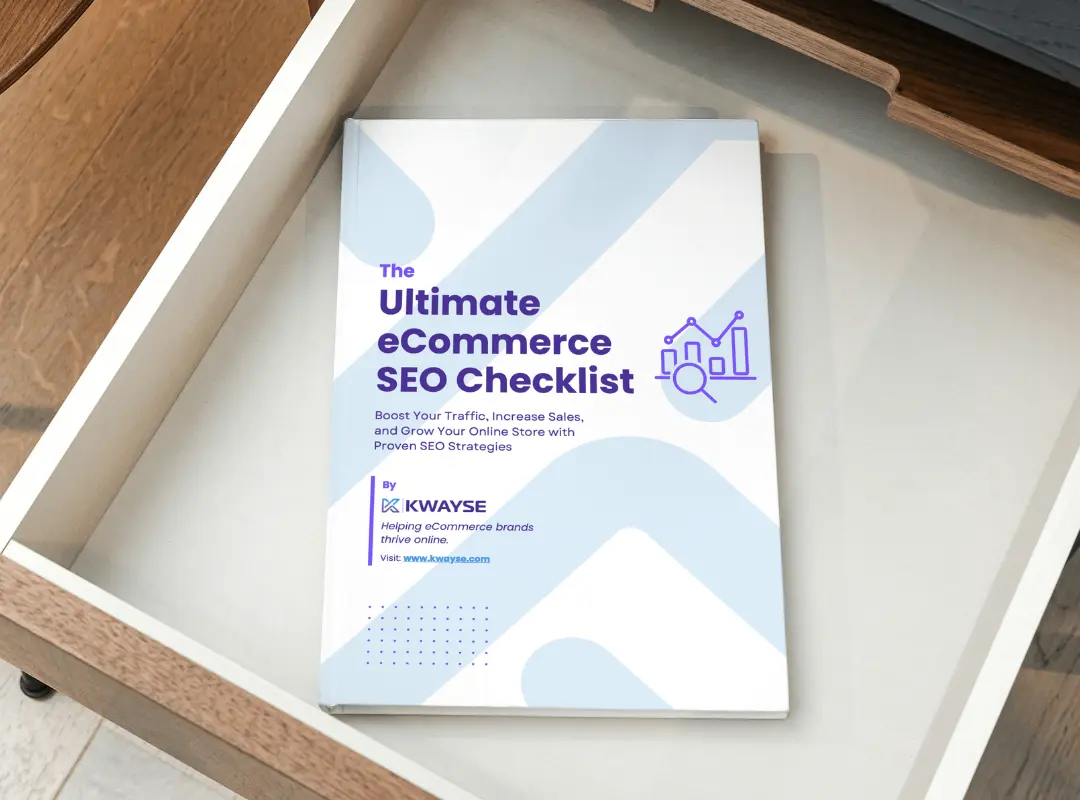Table of Contents

Introduction to SEO mistakes to avoid
In today’s digital age, competition is fierce. It is vital for any company with a website to optimise it in order to be visible on Google and other search engines. Obtaining organic traffic and improving visibility is done through SEO (search engine optimisation). A reminder of what SEO is: This is the process of optimising your website to reach the first page of the search engines using techniques and strategies put in place by yourself or by SEO consultants.
SEO is extremely effective IF done properly. Many companies neglect SEO. Unfortunately, they don’t realise the importance of SEO and make mistakes that are fatal to their natural referencing. Fortunately, we’ve put together a list of the top 10 SEO mistakes to AVOID. So stay focused and put our advice into practice to optimise your website.
SEO mistake n°1: Ignoring User Intent
- Explanation: Focusing solely on keywords without considering what users are actually looking for.
- Why it’s a Problem: Search engines prioritise user intent, so content must align with what users want.
- Example: If you target the keyword ‘white t-shirt’ and offer a blog article on what a white t-shirt is – when the user wants to buy a white t-shirt – you will have very little chance of ranking on the first page of Google.
- How to Avoid: Use tools like Ahrefs, Google Trends, and SEMrush to better understand and address user queries.

SEO mistake n°2: Poor Keyword Research
- Explanation: Targeting the wrong keywords or failing to do in-depth research.
- Why it’s a Problem: Wrong keywords lead to irrelevant traffic, poor rankings, or missed opportunities.
- Example: You’re an ecommerce brand that sells running shoes. Instead of targeting the keyword “running shoes”, you target “shoes”. The problem here is that “shoes” is too broad, overly used and not specific enough. As a result, you run the risk of attracting poorly qualified leads and struggling to reach the top of the search results.
- How to Avoid: Conduct thorough keyword research and choose relevant, high-value terms using tools like SEMrush and Ahrefs.

SEO mistake n°3: Not Optimising for Mobile
- Explanation: Failing to ensure that your site performs well on mobile devices.
- Why it’s a Problem: With Google’s mobile-first indexing, poor mobile optimization can harm rankings. Did you know that mobile users account for 56.1% of global web traffic? Without mobile optimisation, you risk losing a large proportion of this traffic.
- Example: imagine visiting an e-commerce site on your phone. You go to a product page with text that’s illegible because it’s too small, a purchase button that’s hard to click, and so on.
- How to Avoid: Use responsive design, optimise for speed, and test your site on multiple mobile devices.

SEO mistake n°4: Neglecting Technical SEO
- Explanation: Overlooking important technical aspects like site speed, indexing issues, and broken links.
- Why it’s a Problem: These issues can cause search engines to devalue your site and affect crawlability.
- Example: A website that cannot be found on Google is probably not indexed or penalised because of very poor technical performance, such as the speed at which the website loads.
- How to Avoid: Regularly audit your website using tools like Google Search Console, Ahrefs’ Site Audit or our free website Audit Tool.
SEO mistake n°5: Thin or Duplicate Content
- Explanation: Publishing content with little value or repeating content across pages.
- Why it’s a Problem: Google’s algorithms penalise thin, low-quality, or duplicated content.
- Example: Given that this is a hot topic, we’re going to take a look at the mass content generated by AI. Some sites use AI to produce articles en masse (and thus hope to get traffic quickly or fill a quota). The problem, of course, is that this content is not worked on at all and adds very little value. In short, they are of poor quality.
- How to Avoid: Focus on creating unique, high-quality, and informative content that meets user needs.
SEO mistake n°6: Over-Optimization or Keyword Stuffing
- Explanation: Overusing keywords in an attempt to manipulate rankings.
- Why it’s a Problem: Search engines recognize keyword stuffing and penalise sites for it.
- Example: Some SEO service providers can promise impressive results in a very short space of time, and all at a low price. The truth is that these ‘experts’ will use techniques – that are not recommended by search engines – such as keywords stuffing or keywords cloaking. They will literally spam the page with keywords that they will hide by putting the text in the same colour as the background of the website.
- How to Avoid: Use keywords naturally, focusing on user experience and content quality.
SEO mistake n°7: Ignoring Internal Linking
- Explanation: Not making use of internal links to guide users and search engines through your site.
- Why it’s a Problem: Poor internal linking can limit the flow of link equity and hinder indexation.
- Example: When you write a blog post, remember to link to other related blog posts.
- How to Avoid: Create a strategic internal linking structure, ensuring that important pages are easily accessible.

SEO mistake n°8: Failing to Optimise Meta Tags
- Explanation: Not using or poorly optimising title tags and meta descriptions.
- Why it’s a Problem: Meta tags are essential for ranking and click-through rates (CTR).
-
Example: If you sell running shoes, you’ll need to write an optimised title and description that will encourage users to visit your website. For example:
- Title: Running shoes for men, women and children
- Description: Discover our top quality running shoes. Perfect for road, trail, and hybrid surfaces. Shop Now!
- How to Avoid: Write compelling, keyword-optimised title tags and meta descriptions for every page.

SEO mistake n°9: Poor Backlink Strategy
- Explanation: Focusing on low-quality links or engaging in link schemes.
- Why it’s a Problem: Low-quality backlinks can harm rankings and lead to penalties.
- Example: ‘1000 backlinks for only $15’ We’re sure you’ve come across this type of service. Although it’s a tempting proposition, we don’t recommend buying this service from these “SEO experts”. They will simply spam your site url on unreliable forums or blog comments that have nothing to do with your niche. It’s better to spend a certain amount (in line with your budget) on a few quality backlinks.
- How to Avoid: Build high-quality, relevant backlinks through organic outreach, guest blogging, and creating linkable content.

SEO mistake n°10: Not Measuring or Adjusting SEO Strategies
- Explanation: Implementing strategies without monitoring results or adjusting based on data.
- Why it’s a Problem: SEO requires ongoing adjustments based on performance metrics.
- Example: If you have implemented an SEO strategy, you need to look at the results. This will tell you whether the strategy you’ve put in place is working and whether it needs adjusting.
- How to Avoid: Use tools like Google Analytics and SEMrush to track SEO progress and make data-driven improvements.
SEO mistakes to avoid - Bonus: 4 Web Design Mistakes That Affect Your SEO Performance
1. Mobile-Friendly Design
If you believe that having a website and a social media account is enough to market your business, then you should think again. Nowadays, websites without a mobile-friendly design are doomed to fail. With more than 55% of the world’s population using their mobile devices to surf the internet and shop online, that’s a huge chunk of the market you’re missing out on. You need to make your website responsive to generate more traffic. This is because Google offers a higher ranking to websites that have a mobile-friendly design.
2. Confusing Navigation
No matter how stunning your website looks from a design perspective, all of that will be for nothing if your navigation doesn’t make sense. Puzzling and complex navigation is more than likely to irritate users and confuse them whenever they visit your website. You need to consider the user experience and how easy it is for your site visitors to find the information they’re looking for and know which part of the website they’re currently in.
3. Missing H1 Tags
If there’s one element in a web page that you shouldn’t forget to add, it’s an H1 tag. This is the part of the website that helps the crawlers easily find the page’s subject matter. The H1 tag basically provides a brief introduction to the page. Without it, the crawlers would have a hard time identifying what your website is about, making it even harder for people to find your website. This hurts your SEO a lot, so you better make sure that every page on your website has an H1.
4. Slow Page Loading
We all know how people like fast things. From the food we order to the vehicles that we ride on the way to work, people rely too much on the speed of things and how fast they can have it. The same principle applies to websites. A slow website in a fast-paced digital world is designed to lose every time. Any user would immediately turn away when they spend more than three seconds waiting for your website to load. Interestingly, Google also uses page load times to determine website ranking, making it an important consideration. So a slow website is definitively one of the many SEO mistakes to avoid.
Conclusion
Poorly executed and neglected SEO can be fatal for your website. You could see your site penalised by the search engines. As a result, your website will stagnate in the search results or even not be indexed at all. On the other hand, SEO done right will have wonderful effects on your performance: better ranking, more visits, more conversions, etc. We hope that you found this guide on SEO mistakes to avoid being useful. Don’t forget to download our free Ultimate eCommerce SEO Checklist to optimise your website!






2 Responses
I think website owners should always consider SEO when building their sites. These days a website without a good SEO campaign is pretty much useless!
I couldn’t agree more Simon!